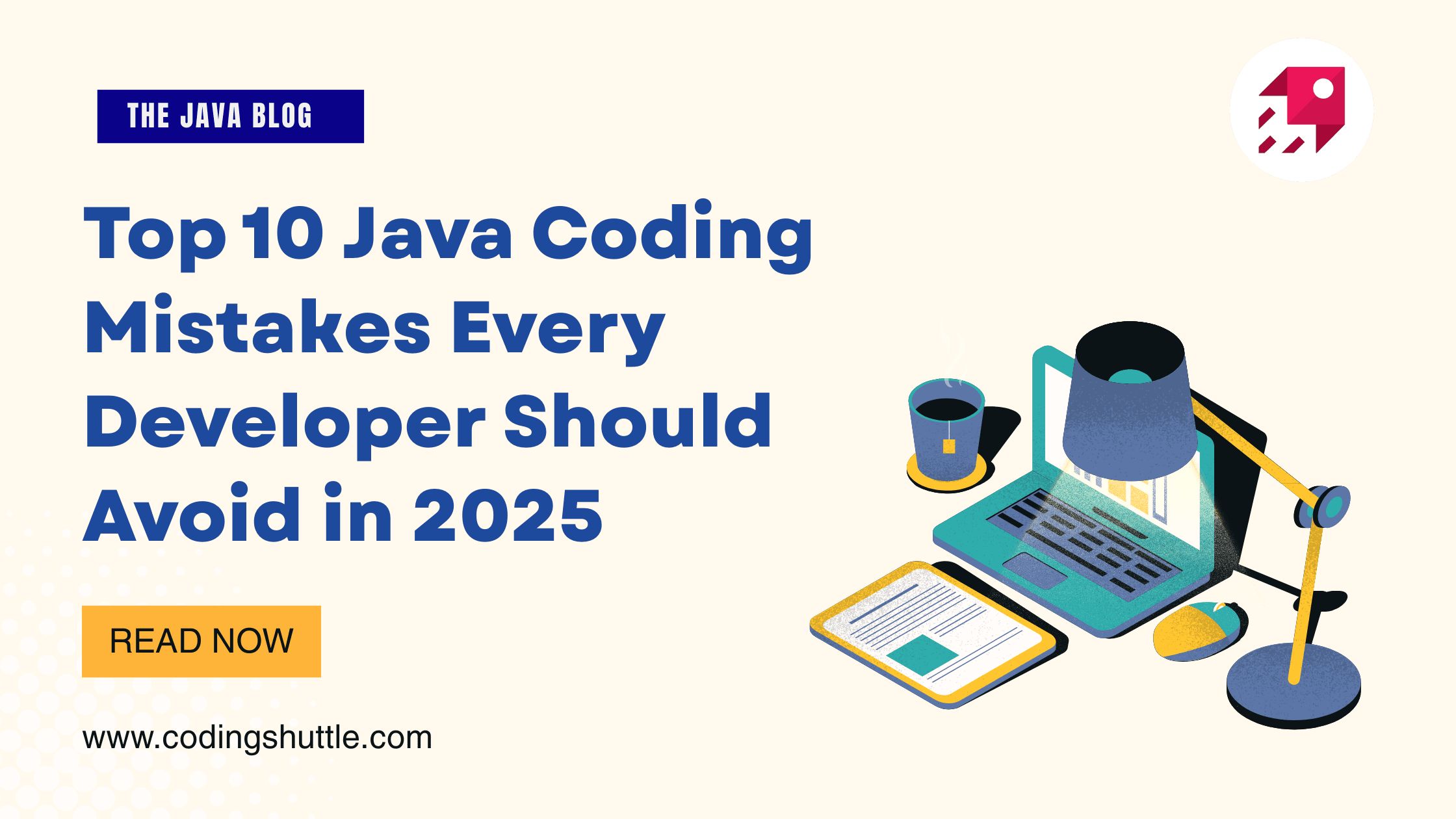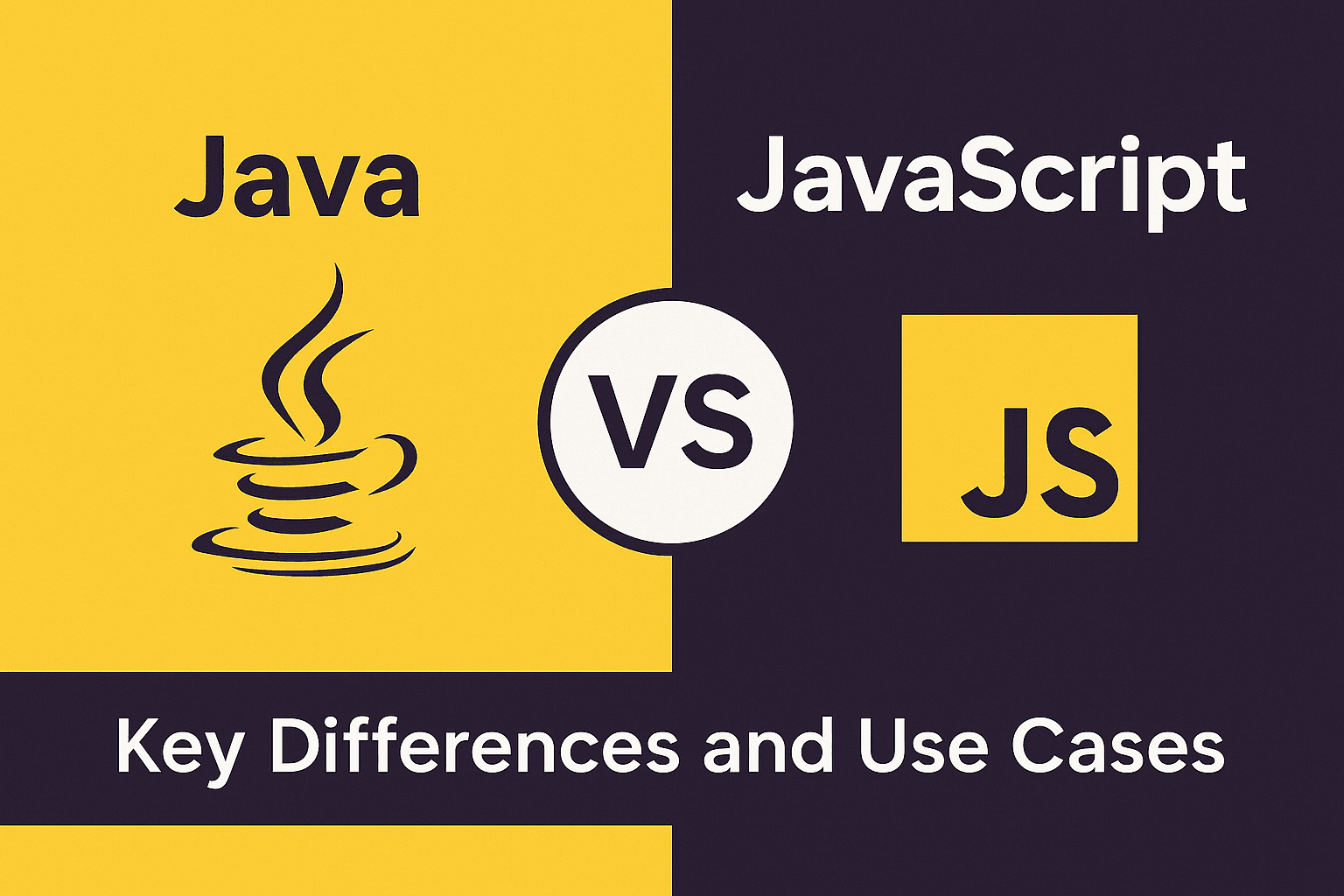
Top 10 Java Coding Mistakes Every Developer Should Avoid in 2025
Avoid common Java pitfalls that cause bugs, performance issues, and security risks. Discover the top 10 Java coding mistakes with examples and best practices to write clean, efficient, and reliable code in 2025. Perfect for beginners and experienced Java developers.
Munaf Badarpura
August 18, 2025
6 min read
Java is a powerful and widely-used programming language for building robust applications. However, even experienced developers can fall into common pitfalls that lead to bugs, performance issues, or security vulnerabilities. Knowing these mistakes and how to avoid them can significantly improve your code quality, it reduce debugging time, and make your applications more reliable.
So in this article, I will explain the top 10 must-know Java coding mistakes that every Java developer should be familiar with, along with example code snippets. So let’s get started.
1. Comparing Strings with == Instead of equals()#
I’ve seen this mistake trip up many beginners in my projects. Using == checks for reference equality, not content equality, which can lead to unexpected results when comparing strings from different sources. It’s a common bug that causes logical errors, especially in conditions like user input validation.
Always use the equals() method for string comparisons. For case-insensitive checks, use equalsIgnoreCase().
Example of bad code:
Example of good code:
2. Not Checking for Null Before Accessing Objects#
NullPointerException is one of the most frequent runtime errors I encounter. It happens when you try to call a method or access a field on a null reference, crashing your program unexpectedly. I personally make it a habit to add null checks early to prevent these crashes in production.
Use conditional checks or Java’s Optional class to handle potential null values safely.
Example of bad code:
Example of good code:
Or using Optional:
3. Modifying a Collection While Iterating Over It#
I’ve debugged this issue countless times — it leads to ConcurrentModificationException when you add or remove elements from a list during iteration with a for-each loop. This mistake disrupts the iterator and can cause unpredictable behavior in multi-threaded environments.
Use an Iterator explicitly and call its remove() method, or collect changes in a separate list and apply them after iteration.
Example of bad code:
Example of good code:
4. Using Floating-Point Types for Monetary Calculations#
In financial apps I’ve worked on, using float or double for money leads to precision errors due to binary representation, causing rounding issues like 0.1 + 0.2 != 0.3. This can result in incorrect calculations and serious business problems.
Use BigDecimal for precise decimal arithmetic, especially for currency.
Example of bad code:
Example of good code:
5. Not Closing Resources Like Streams or Connections#
Forgetting to close file streams or database connections is a mistake I made early in my career, leading to resource leaks, file handle exhaustion, or OutOfMemory errors. It’s especially problematic in long-running applications.
Use try-with-resources (introduced in Java 7) to automatically close resources.
Example of bad code:
Example of good code:
6. Ignoring the Importance of Overriding equals() and hashCode()#
When using custom objects in collections like HashSet or HashMap, not overriding these methods causes issues because the default implementation uses object references, leading to duplicates or failed lookups. I recommend always overriding them together for consistency.
Override both methods, using tools like IDE generators for boilerplate.
Example of bad code (without override):
Example of good code (with override):
7. Creating Unnecessary Objects in Loops#
I’ve optimized performance in loops by avoiding this — creating objects like new String or Integer inside tight loops wastes memory and triggers frequent garbage collection. This reduces efficiency, especially in high-performance code.
Reuse objects or move creation outside the loop when possible.
Example of bad code:
Example of good code:
8. Using Raw Types Instead of Generics#
Raw types (like List without ) bypass type safety, leading to ClassCastExceptions at runtime and making code harder to maintain. I suggest using generics from the start for compile-time checks.
Always specify type parameters in collections to avoid raw types mistake.
Example of bad code:
Example of good code:
9. Off-by-One Errors in Loops or Arrays#
This classic mistake, like indexing from 1 instead of 0 or using <= in loops, causes ArrayIndexOutOfBoundsException or misses elements. I double-check loop bounds in every array operation to avoid it.
Remember arrays are 0-indexed; use < length for loops to avoid this mistake.
Example of bad code:
Example of good code:
10. Not Handling Exceptions Properly#
Swallowing exceptions with empty catch blocks or printing stack traces without action hides errors, making debugging tough and leaving issues unresolved. In production apps I’ve built, proper handling prevents silent failures.
Log exceptions meaningfully, rethrow if needed, or use custom exceptions for better error handling.
Example of bad code:
Example of good code:
Conclusion#
These 10 Java coding mistakes are essential for every Java developer to recognize and avoid. They support you throughout the development lifecycle from writing clean code to debugging, optimizing, and maintaining reliable applications.
Want to Master Spring Boot and Land Your Dream Job?
Struggling with coding interviews? Learn Data Structures & Algorithms (DSA) with our expert-led course. Build strong problem-solving skills, write optimized code, and crack top tech interviews with ease
Learn more

